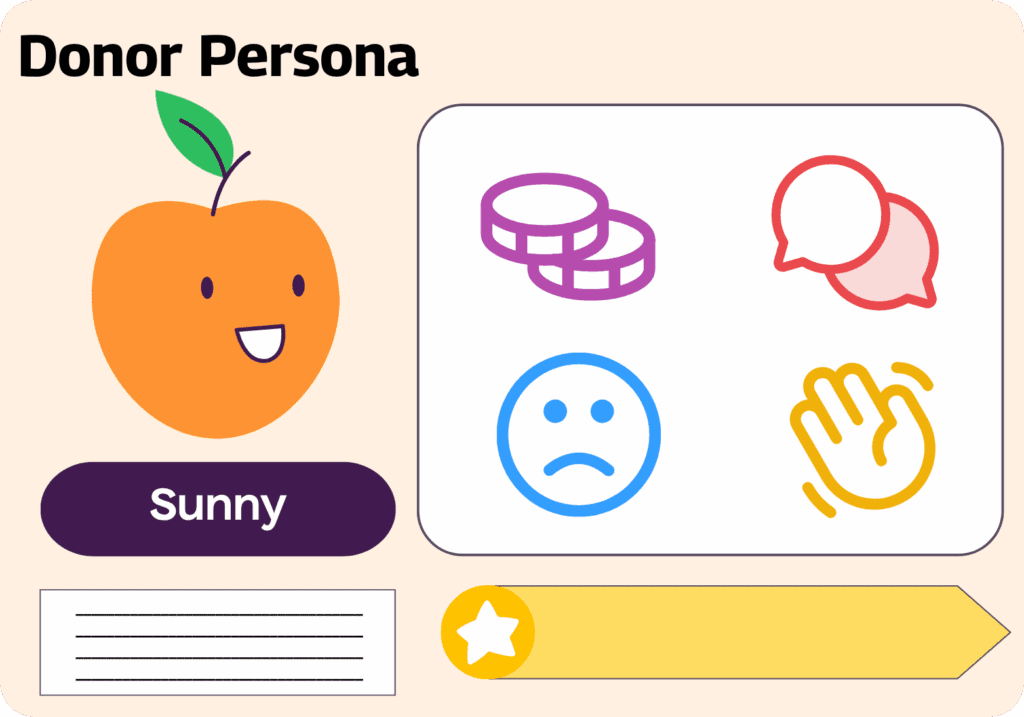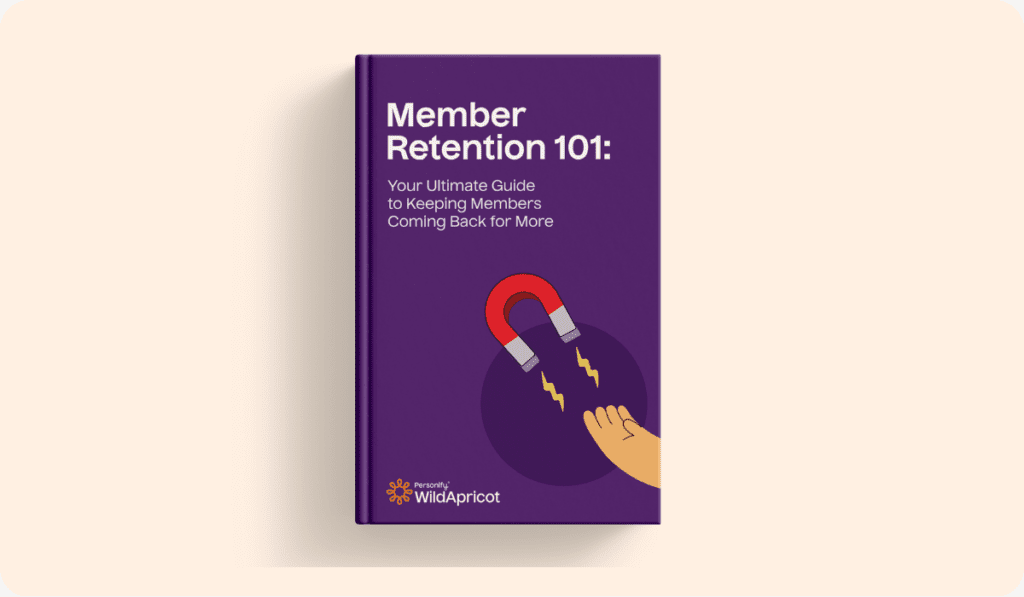If you’ve ever found yourself uncomfortable with the ways fundraising works in the nonprofit sector, you wouldn’t be alone. Centering donor satisfaction over the needs of your community, as well as neglecting staff wellness, ultimately takes away from everyone’s missions.
That’s where community centric fundraising comes in!
Community centric fundraising (CCF) imagines a world where the charitable giving sector moves away from outdated fundraising traditions. This movement takes a critical look at what’s not working in the nonprofit world, and offers ideas to make it better!
Here’s everything you need to know about community centric fundraising, from principles to practice.
What is community centric fundraising (CCF)?
Community centric fundraising is a growing movement that aims to evolve and transform fundraising in the nonprofit sector. Instead of leaning into traditional, donor-centric giving models, it encourages nonprofits to work from a perspective of social and economic justice.
1. What is Community-Centric Fundraising?
For a long time, marginalized leaders of nonprofit organizations have been uncomfortable with traditional fundraising models. From 2015 – 2017, Vu Le published three key articles that highlighted points of frustration he had heard from nonprofit leaders (particularly women!) of color, as well as white allies, and ultimately defined the community-centric fundraising model.
These writings inspired organizers to have monthly meetings, which eventually led to a larger Seattle-based convention in 2018 that brought together fundraisers of color. Soon after, the Seattle chapter of Community-Centric Fundraising was officially established. Less than a year later, it was expanded all across the nonprofit sector.
Community-centric fundraising isn’t an organization so much as it is a framework. It makes space for nonprofit leaders of color, as well as some white allies, to reimagine and amplify what more equitable fundraising could look like. Above all, the goal is to bring social and economic justice into the nonprofit sector.
2. What is social and economic justice?
According to the National Association of Social Workers, “social justice is the view that everyone deserves equal economic, political and social rights and opportunities.” It isn’t just about being kinder on a one-on-one level, but actively dismantling the systems that disempower people.
Social justice centers issues such as:
- Anti-racism
- Gender equality
- LGBTQ+ rights
- Disability justice
- Worker’s rights
- Environmentalism
- Economic justice
Economic justice aims for a world without poverty—specifically by dismantling the systems that keep people in poverty. This includes ending race- and gender-based income inequality, advocating for universal basic income, creating equal employment opportunities and more.
Economic justice is especially relevant to the nonprofit community. After all, how many fundraising ideas and campaigns are designed to bring money to impoverished communities?
3. What do you mean by community?
“Community” can mean a few different things depending on who you’re aiming to serve with your fundraising.
This could include:
- Larger locations like cities
- Individual neighborhoods
- A specific demographic
Getting a clear idea of the community you’re centering your work around will help you create a fundraising plan that actually gives people what they need.
What is the difference between community-centric and donor-centric fundraising?
Traditionally, a good deal of fundraising for nonprofits has come from prioritizing the wants and needs of donors. Communications, programming, messaging and more all center what will make donors happiest, and bring in the largest amount of money.
This is what we call donor-centric fundraising. While it undeniably brings in large gifts, it prioritizes giving donors status and power, selling the narrative that donors are the only way to “save” a helpless community.
Community-centric fundraising is about elevating the voices and desires of your organization’s community. Instead of questioning what donors will be happiest with, you go to the community that your work is meant to benefit. It’s a humanizing approach, and one that will best serve your cause in the long run.
This doesn’t mean cutting donors out of the picture—their philanthropy is important, and appreciated! It simply means that communities come first when it comes to goal-setting, time and resources. And by prioritizing community, you’ll naturally find donors who are aligned with your mission, rather than the other way around.
Why practice CCF?
While working with community centric fundraising comes with a major mindset shift, its value cannot be overstated! Your organization can actively empower your beneficiaries—and hopefully build a world where philanthropy is no longer needed.
Some benefits of practicing community-centric fundraising include:
- Respecting and valuing community expertise. Everyone is the expert of their own experiences. Instead of guessing at what your community might need, listening to them will help you make the difference they want.
- Prioritizing sustainability. Nonprofit burnout is real! Following community centric fundraising principles will help keep up momentum for your cause.
- Cultivating trust and investing in long-term relationships. Many communities are wary of external bodies coming in for charitable giving. Community centric fundraising strategies show people that they’re the priority, not donors.
- Fostering mutual accountability and challenging top-down decision-making. Removing a hierarchy is the best way to get everyone’s voices heard. When you create a space where everyone listens to and relies on one another, people are more likely to bring their best.
- Builds power, not just transactions. Instead of bringing in donations that are there and gone, this method helps you break cycles of disempowerment. It might sound strange, but the end goal is to make your work irrelevant in years to come by removing the source of the suffering.
- Takes an intersectional approach. Intersectionality recognizes the relationships between all aspects of marginalized identity. Recognizing these relationships gives you a diversity of perspective, and helps you take a “rising tide lifts all ships” approach. For example, your approach to racial justice should inevitably tie to gender equality, and disability justice.
- Prioritizes local solutions. Instead of searching all over for solutions to your troubles, you can look right into your own community. You might be surprised to find how many mutually beneficial solutions are right outside your door!
10 principles of community-centric fundraising
Since Vu Le introduced the 9 principles of community-centric fundraising in 2017, they’ve gone through a few evolutions.
Here at the 10 community centric fundraising principles currently in action:
- Fundraising must be grounded in race, equity, and social justice. This includes training fundraising professionals in anti-oppression, investing in fundraisers from the communities organizations serve and minimizing inequitable things like trickle-down community engagement.
- Individual organizational missions are not as important as the collective community. This means checking if the mission is still relevant, and even being willing to shut the organization down if it turns out it’s doing harm.
- Nonprofits are generous with and mutually supportive of one another. No more competition! Nonprofits should be partners in care instead of competing for resources.
- All who engage in strengthening the community are equally valued. Whether someone is a volunteer, staff, donor or board member, their support deserves respect and gratitude.
- Time is valued equally as money. In a donor-centric model, financial support is often treated as the final goal. But in reality, time and labor are equally—if not more!—important, and are a more accessible way for everyone to give.
- We treat donors as partners, and this means that we are transparent, and occasionally have difficult conversations. Sometimes donors do not have realistic expectations, or ask nonprofits to act against their values. In a community-centric model, these challenges are met with honest conversation, even if that means ending the relationship.
- We foster a sense of belonging, not othering. Instead of framing organizations as “saviors,” community-centric nonprofits partner authentically. This means using “we” language, being mindful of messaging, partnering with community members and more.
- We promote the understanding that everyone personally benefits from engaging in the work of social justice. This means everyone–donors, staff, funders, board members and volunteers alike. The work isn’t about charity, it’s about creating a better world for everyone.
- We see the work of social justice as holistic and transformative, not transactional. Instead of presenting success transactionally (“your donation of x funded y”), nonprofits showcase how the mission itself was funded. This can and should include emphasis on things like overhead costs.
- We recognize that healing and liberation requires a commitment to economic justice. Instead of focusing on band aid solutions, nonprofits and their donors must take an honest look at where inequity comes from. It might be uncomfortable to face how our industry is complicit in capitalism, but that is the first step in making real change!
10 ways your nonprofit can practice CCF
Curious about how you can incorporate community centric fundraising principles into your nonprofit’s fundraising?
Here are 10 simple ways to get started:
1. Assess your current culture
Before making any changes, it’s essential to get a clear idea of where you’re at. This could include strategies like:
- Auditing your salary structure. Is there pay parity for disabled, racialized and/or staff of marginalized genders?
- Reviewing your accessibility standards. Are your staff members’ accessibility needs currently being met to the greatest possible extent? We’ll get into this more below.
- Send out an anonymous survey where staff members can speak their mind. If you find that people are unhappy, consider hiring a workplace mediator who specializes in social justice. Sometimes an outside voice can bring balance to the power dynamic so people feel more comfortable speaking freely.
- Explore your messaging. Whether it be your website, socials presence or something else, reflect on if your work is perpetuating stereotypes. This is especially important if your organization is mostly white!
Be prepared to receive some difficult feedback. It might be surprising to hear that your organization’s culture isn’t serving your whole team, but resist the urge to be defensive. Listening is the first step to making improvements!
2. Invest in training and support
If you’re feeling overwhelmed about where to start in creating a more socially just a nonprofit, remember that experts exist and are available! Anti-racism training, especially for anti-Black racism, are essential, and should include staff, board members and volunteers.
Consider making the training optional for team members whose marginalization is being centered. While it’s nice to imagine your team all learning together, it could actually end up being harmful for those members to be a part of their teammates’ early learning process.
Another way to support your marginalized team members—especially BIPOC employees—is investing in things like increasing professional development budgets. You can also connect them with fundraisers of color outside of your organization to keep building community.
3. Spark internal conversations about social and economic justice
Training is a fantastic start, but it isn’t where the conversation should end! Learning more about social and economic justice is an ongoing (and never-ending!) project.
Make space for conversations in places like:
- Dedicated slack channels for discussions and resources
- A dedicated time for review during board meetings
- Optional movie nights with discussion settings (for example: watching Crip Camp and then discussing how you can go beyond the basics of the ADA)
Actively ask: is the work we’re doing aligned with the values of CCF? Every conversation is an opportunity!
4. Collaborate with other nonprofits
A key value of community-centric fundraising is collaboration over competition. After all, your nonprofits are dedicated to the same cause—why shouldn’t you work together?
Try doing things like:
- Amplifying other organizations’ visibility. This can include shouting them out in newsletters, giving credit for their ideas and points of inspiration in your reports and sharing their information with prospective funders.
- Making new connections. There are many places to connect! You could introduce your existing donors to other nonprofits, or even personally volunteer at another nonprofit’s event as an in-kind donation.
- Helping other nonprofits get funded. You can share resources like fundraising calendar templates, offer to help write grant proposals and pass along unique opportunities that sound perfect for their organization.
5. Build CCF principles into your fundraising strategy
Whether or not you intend it to, your fundraising strategy often ends up reflecting your values! As you build up your strategy for your next campaign, actively incorporate community centric fundraising principles into your strategy.
Here are a few common fundraising strategies to reimagine:
- Beneficiary stories. When you add a face to your campaign, think about how inspiring donors might end up dehumanizing your beneficiaries. For example, having a racialized, unhoused person sharing their struggles with a room full of wealthy white donors is not ultimately a kind thing to do.
- Prioritizing the campaign over operating costs. Instead of centering messaging like your admins/program ratio (“90 cents of each dollar go to our programs!”), highlight the importance of operating costs! Publicly thank donors and funders who keep the lights on.
- Giving donors all the power. It’s frustrating, but some major donors ultimately care more about their ego than your mission. Using “we” language rather than “you” language makes it about community, and if your donors are making burdensome requests, it’s more than acceptable to put down boundaries or let them go.
6. Focus on accessibility
Accessibility is important for everyone across your community. A key part of engagement is the ability to participate.
You can make this easier by:
- Including accessibility measures in your resources. This includes things like live captioning, alt-text, big fonts with contrasting backgrounds and transcripts.
- Making it easy to support your cause. Many donors will give up mid-donation if the process is too complicated. This isn’t because of laziness—many people are simply mentally and emotionally exhausted. Things like text-to-give take away that burden!
- Considering the cost. Not everyone can afford to make major donations. Really emphasize that every little bit counts. Removing tiers from your thank you list is a great way to make people feel valued regardless of what they can contribute.
While these strategies can be helpful for donors and external community members, don’t forget to check in with your internal staff. A healthy culture starts from the inside!
7. Encourage two-way communication with your community
What’s the first word in “community centric fundraising”? That’s right: community!
Prioritize the input of the people who will be most strongly impacted by your fundraising efforts. Trust that they know best what it is that they need, and collaborate with them to come up with some group fundraising ideas!
Before you put a plan into motion, check in that it’s what people actually want. For example, if you’re doing program tours, be sure participants don’t end up feeling like they’re being gawked at.
When it comes to donors, open up the floor for discussion on how everyone benefits from your organization’s work. This helps eliminate the mentality of giving charity out of pity rather than committing to improving our world. You can even provide opportunities for donors to discuss and learn about topics such as taxes, colonization, slavery, reparation, wealth inequity and more.
8. Turn fundraisers into champions
A sad reality of the nonprofit world is that fundraisers often end up going unappreciated. Actively highlight the work that they do and celebrate their passion for your cause! If they are putting in this much effort, then they’re the perfect spokespeople for what comes next.
Giving fundraisers personal web pages where they can blog about their work and have their accomplishments celebrated gives a face to your organization. Plus, it can help them make connections that are valuable outside of work.
9. Measure success holistically
The amount of money your organization raises is only one part of measuring your success.
Look to other factors such as:
- Connections being made on community platforms
- Bringing in fresh donors who align with your values
- Donor retention rates
- The work your board does engaging with social justice efforts
- New relationships to other nonprofits
- Community engagement with things like peer-to-peer fundraising
- Success stories and genuine thank-yous
- Your staff’s overall well-being
In order to step away from the damaging parts of traditional fundraising, it’s important to think beyond money. Looking hard at the big picture is what will give your organization longevity, and make for a better communal culture.
10. Get feedback, improve, adapt!
Community centric fundraising ultimately ties back to listening. The feedback you receive is what helps you learn how to keep growing as an organization. After all, the values of CCF came from a series of conversations between people who wanted the nonprofit sector to do better.
Whether it be holding open conversations about staff wellness or investing in fundraising software to take off the admin road, look for ways to make your work feel better for everyone.
Common challenges and how to overcome them
While community centric fundraising principles bring care and thoughtfulness to the nonprofit world, they don’t come without challenges.
Here are a few common struggles and ways to manage them:
Time and resources
No matter what your fundraising method is, it takes time and resources to get the job done. One benefit of traditional models of fundraising is that they come with familiar structures. However, if you’re trying to avoid the harm they end up doing, you need to put extra effort into being innovative.
Learning comes with a curve—the best thing you can do is gather data, be flexible and put care into the early days of the process. It’ll become natural sooner than you think!
Resistance to change
Change can be scary for people, even when it’s positive. This is even more true when the change calls for self-reflection, which can sometimes get uncomfortable. Plus, if you’re working with team members who have been in the game for a long time, shaking things up can feel intimidating.
Take the time to clearly lay out all that you have to gain from shifting towards community centric fundraising. People should be able to see the purpose of using this model, and understand how it ultimately benefits everyone. And once the successes start rolling in, highlight them!
Lack of trust and relationships
If your community has previously felt exploited by nonprofits (or even your organization!), it will take some time for them to get comfortable with you. The main way to manage this is by asking for as much input as possible, and then actively incorporating it. Keeping your promises is the number one way to form fresh relationships.
Balancing community needs and fundraising
The communities that nonprofits serve often have competing needs. Whether you’re managing a long-term project, running a short-term or just keeping your operating costs met, there’s a lot to balance.
The best thing you can do is get input from your community about what is urgent versus important. From there, making a long-term success plan will help you always have the future in mind while managing what’s right in front of you.
Measuring success
When success isn’t as simple as numbers, sometimes people don’t know how to spot it. Traditional fundraising tells nonprofits to measure their worth in dollars raised—and in general, most people don’t know how to celebrate more holistic success!
Include time in meetings, newsletters and more to celebrate each and every victory. As you model what success can look like, your community will begin to reflect it back to you.
Shift Your Focus To Emphasize Community
We hope this was a valuable introduction to community centric fundraising! As you get ready to kick off your next fundraiser, keep these principles of social justice and communal care in mind.
If you feel lost, just remember: you can start with a conversation. You’re surrounded by people with a diversity of perspectives and experiences. Together, you can transform the nonprofit sector into a more equitable and sustainable place!








